How to Set Up an Ecommerce Funnel That Converts Well in 2025
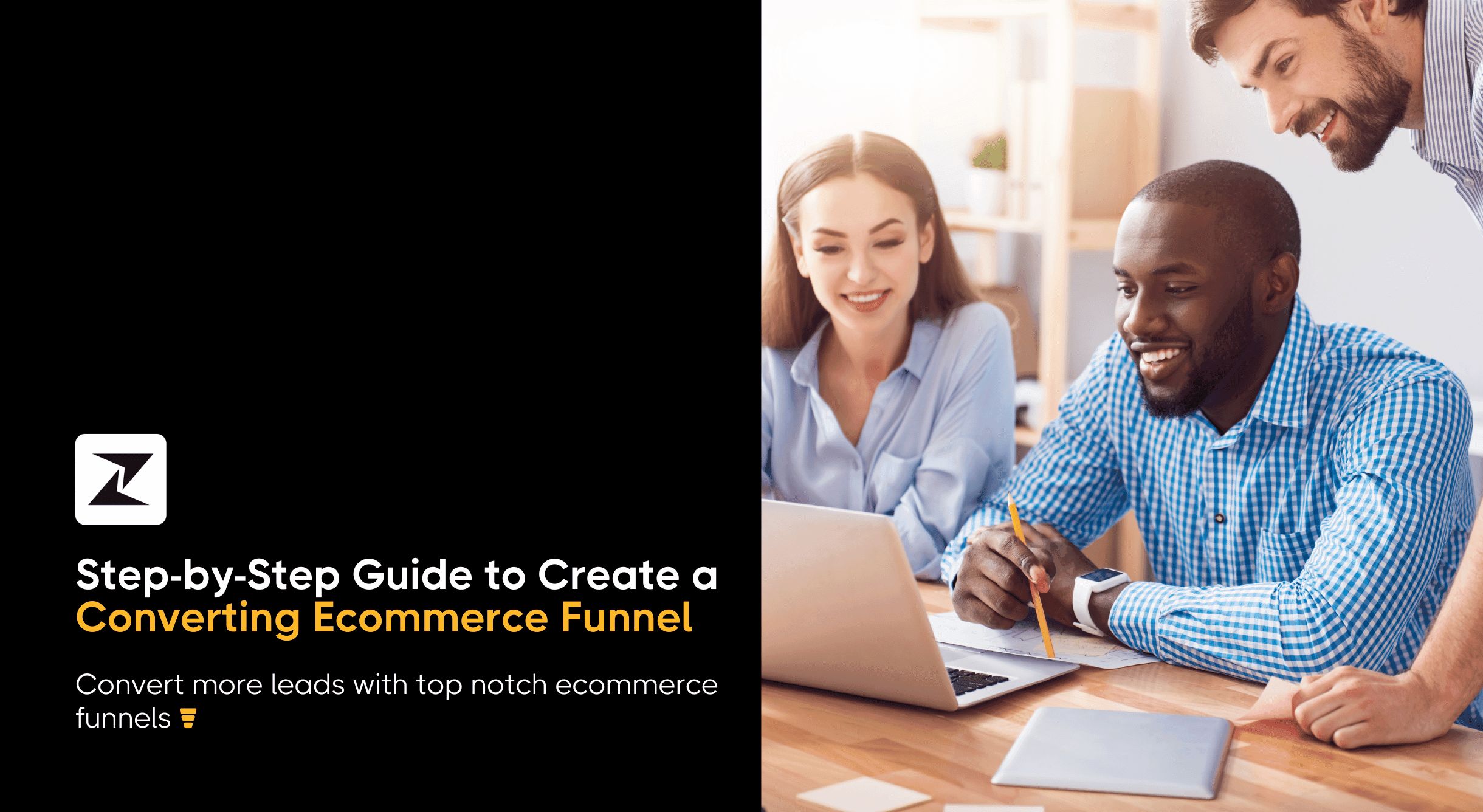
Do you remember the last time you thought about buying something online? Was it a quick purchase or a well-thought-out one? In most cases, you will start by learning more about the product and compare it with other similar products to find the right one for your needs.
The same is the case with your customers.
Before they make a purchasing decision, they compare different products across multiple online stores to find the best match for their requirements.
So, you have to ensure you offer all the necessary information about your products or services and help your customers move along the stages of the sales pipeline. But how can you achieve that? By creating an e-commerce marketing funnel.
Having said that, let us take a look at what an e-commerce marketing funnel is and how you can set one up for your online store to efficiently convert customers from initial contact until they complete the checkout process.
What is an e-commerce funnel?
An e-commerce funnel is a visualization of your customer’s journey throughout the various stages of the sales process, from learning about the product for the first time till they become a customer.
A great example of an e-commerce funnel is when you visit an e-commerce platform looking for something you want and browse through the listings to find the one that fits your needs the best. But before deciding to make a purchase, you thought of looking for other brands and read the product reviews.
After you have the necessary information, you finally buy the product that you have been looking for. This entire cycle of knowing about the product, researching more about it on the internet, and ultimately making a purchase, all encompasses the e-commerce funnel.
Commonly, an e-commerce funnel will have 5 stages, including Awareness, Interest, Consideration, Conversion, and Retention. So, let’s check them out in detail individually.
Various stages of the e-commerce funnel
The entire e-commerce funnel is divided into five phases to enhance its usability and allow you to simplify your sales process. That being said, here are the stages of the e-commerce marketing funnel:
Awareness
The first stage of e-commerce funnel is where your focus is to introduce your products to your customers and make them aware of your offerings. Here, the customers understand that they require a solution to an issue, hence they need to search for a product or service to help them.
And your offerings might be the ones they discover after looking for a solution on the internet. This is why, it is crucial to provide relevant information about your products on your website, ensuring no visitors ever leave your site to learn more about a product.
Interest
The next stage of your e-commerce funnel is the Interest stage. By now, your prospects are aware of their needs and are looking for a way to fulfill them. They also have an idea about your e-commerce store along with your products.
One way to identify if a prospect has reached the Interest stage is to monitor their actions and how they interact with your business.
For instance, if a prospect has opted in to receive your marketing emails, subscribed to your newsletter, reached out to your sales team, or browsed through your product catalog, then it is an indication that they are thinking about buying your products.
Generate hype about your products with Zixflow
With Zixflow’s custom communication options, you can send tailored messages to make your prospects interested in your offerings
Book a DemoConsideration
After the Interest stage comes consideration. In this phase, your potential customers are considering purchasing a product and are weighing their options before ultimately choosing one. This is where they are looking for the sweetest deal that is both cost-effective and best matches their needs.
This is where you have to highlight the benefits of your products and how they can help make your prospects’ lives easier. This way, you can effectively convey to your customers why they should consider your offerings.
For example, one of the brands that does this correctly is Apple. Apple has adopted a marketing approach where it emphasizes the phones’ looks, slim design, and usability, something their customers are looking for.
Conversion
The penultimate stage of the e-commerce funnel, a prospect in the Conversion stage is ready to make a purchase but is still considering a few things, such as whether I really need this solution, whether can I get it for cheaper, or the shipping fee is very high.
So, your objective here is to alleviate any internal hurdles a prospect is facing and encourage them to make a purchasing decision. By offering special deals or discounts, you can resolve these objections, allowing you to convert a prospect into a customer.
Retention
Lastly, the final stage of the e-commerce funnel is the Retention phase. Most of the time, businesses think that after a customer has bought a product, there is nothing more to be done. However, that is not the case.
Repeat purchases are critical to running a successful e-commerce business. In fact, according to a report, loyal customers spend 67% more than first-time buyers.
Not just that. Having a loyal customer base can help you boost your sales engagement via word-of-mouth marketing, referring friends or family, and providing customer testimonials. That’s why, including the Retention stage in your e-commerce funnel can greatly increase your sales.
How to build an e-commerce marketing funnel?
Now that you have learned about the various stages of an e-commerce funnel, let’s look at how you can create one for your business. Building an e-commerce funnel will let you shorten the customer journey and get more customers effectively.
Create visually appealing landing or product pages
The first step in crafting a successful e-commerce marketing funnel is to design an attractive website with informative landing pages to let your visitors know all the necessary information in a single place, allowing them to make decisions quickly.
As most e-commerce purchases don’t require any human interactions or 1:1 communication, you have to ensure that your website does all of the talking and answers any questions your visitors may have.
Some of the things you can do to make sure your online store is up to the standard are:
- Adding HD photos and videos of your products
- Complete product descriptions and specs (if you are selling electronics)
- Customer review and ratings
- Transparent pricing and shipping details
- FAQs regarding particular products
- A CTA button to encourage visitors to take the next step
Offering every little bit of information on your site will enable your visitors to not visit other platforms to learn more about a product. This can increase the likelihood of them adding a product to their cart and completing the purchase straight away.
Take Amazon for example, it houses thousands of products and each has its own page containing information about the product, its pricing, any offers customers can avail, and customer testimonials. This way, visitors can see everything they need to know from a single source without having to search for it on the internet.
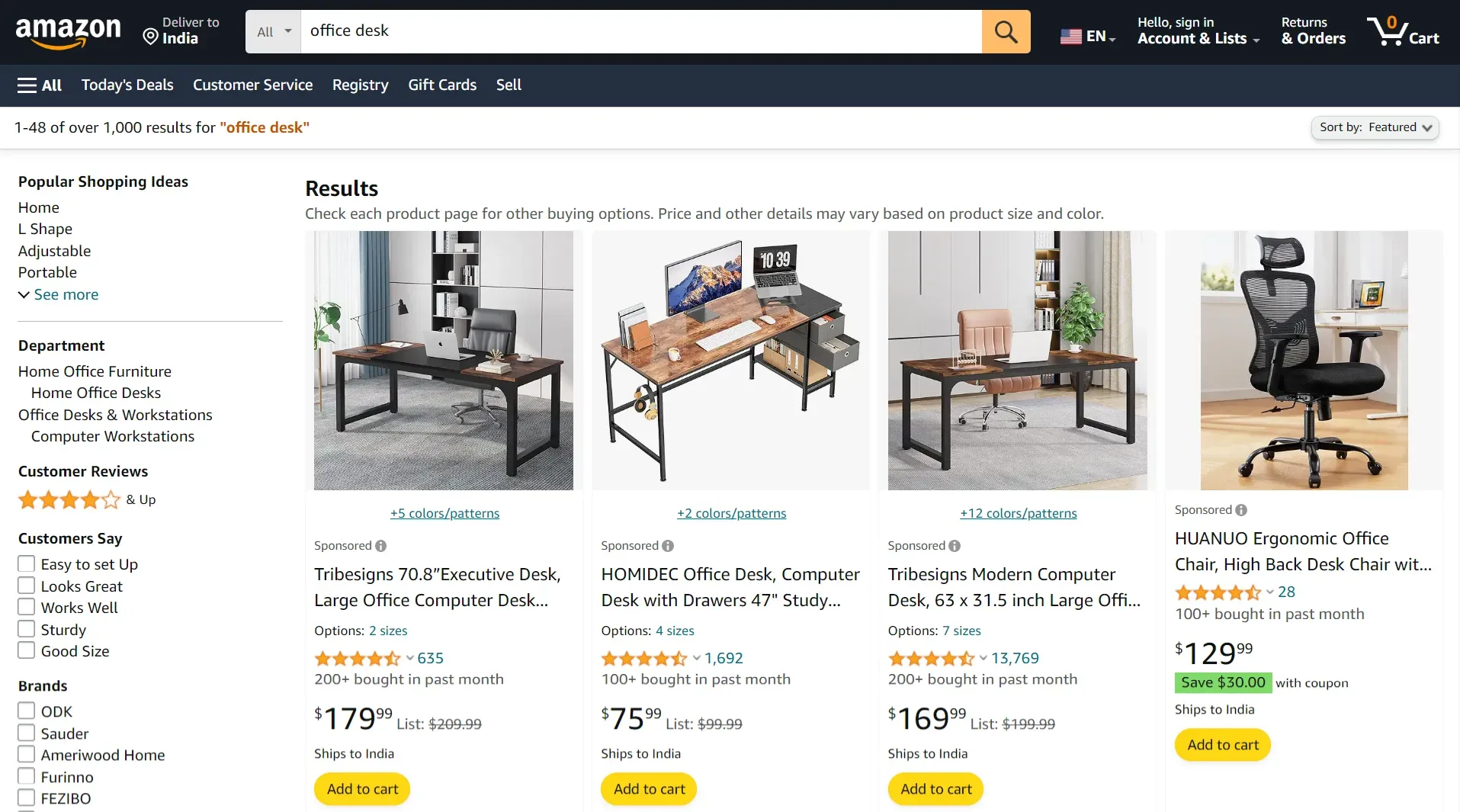
Optimize your funnel according to the stages
Once you have your website ready with essential information about your offerings, next, you have to optimize your e-commerce funnel according to the stages in the customer journey. After all, by enhancing your sales engagement model, you can lower the time prospects spend in per-purchase stages and effectively guide them to the next one.
Awareness
In the Awareness stage, you should focus on building brand awareness and letting potential customers know about your products. To do that, you need to create meaningful content to engage prospects and act as a source of information they frequently visit.
There are various kinds of content and channels you can use to increase awareness while providing value to your prospects. However, you need to identify the right type of content that best fits your business and target audience.
For instance, if your business revolves around lifestyle products, you can use Instagram to post high-quality images to give potential customers an idea about your offerings. You can also upload how-to guides on YouTube to inform your audience on how to make the most of our products.
Take GoPro, a world-famous camera brand, for example, it uploads high-quality videos of challenges on YouTube to both, engage its audience, and promote its products.
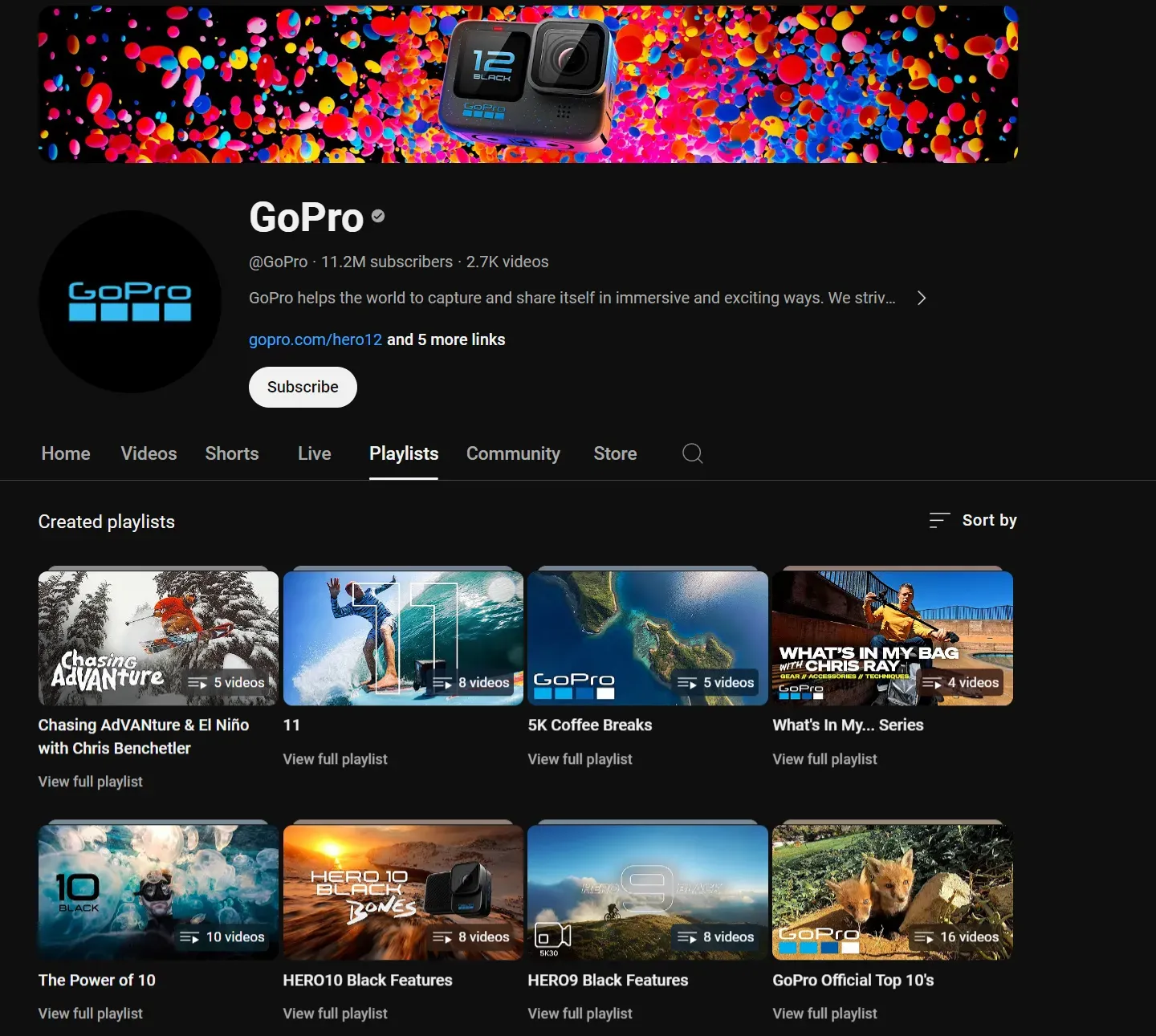
Boost brand and product awareness with our multi-channel communication capabilities
Run outbound sales campaigns via Zixflow to expand your audience and make them aware of your business
Get StartedInterest
Now that you have your prospects’ attention, you have to make them interested in your offerings. One way to achieve this is by sending personalized drip emails to make them familiar with your products and address any objections they might have.
In your emails, you can send tailored exclusive offers to send them straight to the Conversion stage, provide testimonials from previous customers to build trust, or product demonstration videos to pique their curiosity as to how it works.
But before you can start sending these emails, you require a communication solution that lets you design customized marketing emails to compel prospects and move them to the next stage swiftly.
Zixflow is a multi-channel marketing platform that includes email, SMS, and WhatsApp marketing capabilities, allowing you to interact with prospects on the channel of their choice.
With Zixflow, you can craft fully customized email templates via Text Editor or Drag-and-Drop Email Builder which comes with an AI assistant to help you make your emails more snappy.
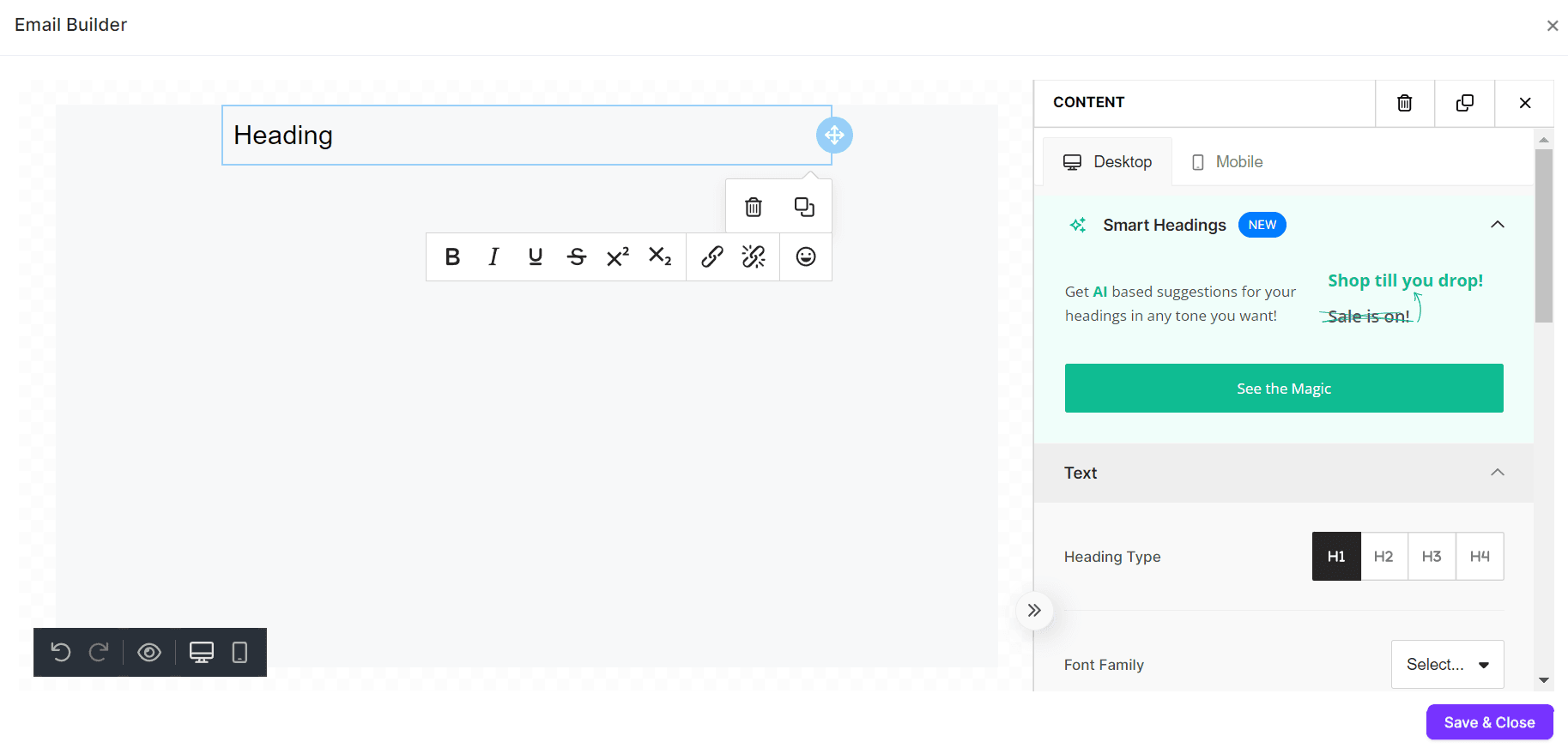
That is not all. After you are done designing your emails, set up a no-code email campaign to send them instantly to your prospects, encouraging them to make a purchasing decision.
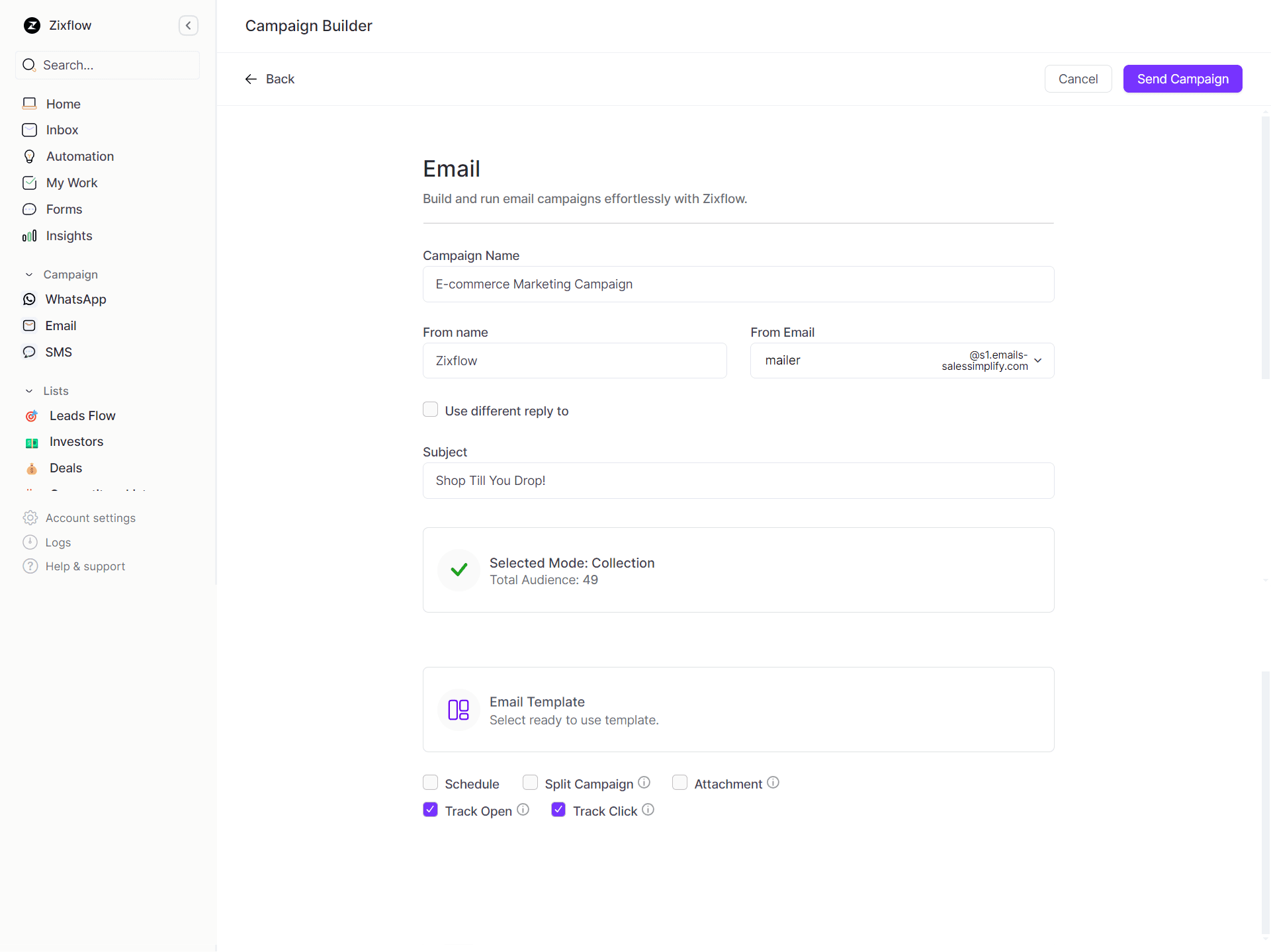
Conversion
All your marketing efforts were successful and now the prospect is ready to make a purchase. However, that doesn’t mean you can rest easy for the smallest hurdle can stop you from getting a sale.
So, to ensure prospects don’t change their mind at the last minute, you have to streamline your checkout process for smooth completion of a sale.
Make your checkout process as short as possible. Don’t ask for irrelevant details and keep it to the point. Request personal, shipping, and payment information once and offer them a quick way to pay using saved information from past purchases.
Also, keep your checkout screen free of any hindrances like advertisements, product suggestions, or any other distracting element that can stop buyers from placing their orders.
Retention
Congrats, you have got yourself a sale! But that doesn’t mean your work is done. Now, you have to focus on building relationships with your customers so they come back and buy from you again.
In order to do that, you have to implement a customer retention campaign to keep your customers engaged by sending them relevant content and recommendations from time to time.
You can also add them to your loyalty program, where they can enjoy an exclusive discount on their next purchase. Or you can ask them to refer a friend for similar benefits.
But how to reach out to customers after a sale?
Since there are numerous techniques to connect with your customers post-sale, your best bet is to set up e-commerce automation. This way, you don’t have to manage customer retention manually and you can concentrate on getting more sales.
A platform that can help you with automating your customer retention messaging is Zixflow. Using its sales cadences and Flows, you can autopilot your post-sale engagement to ensure your customers are satisfied with your products.
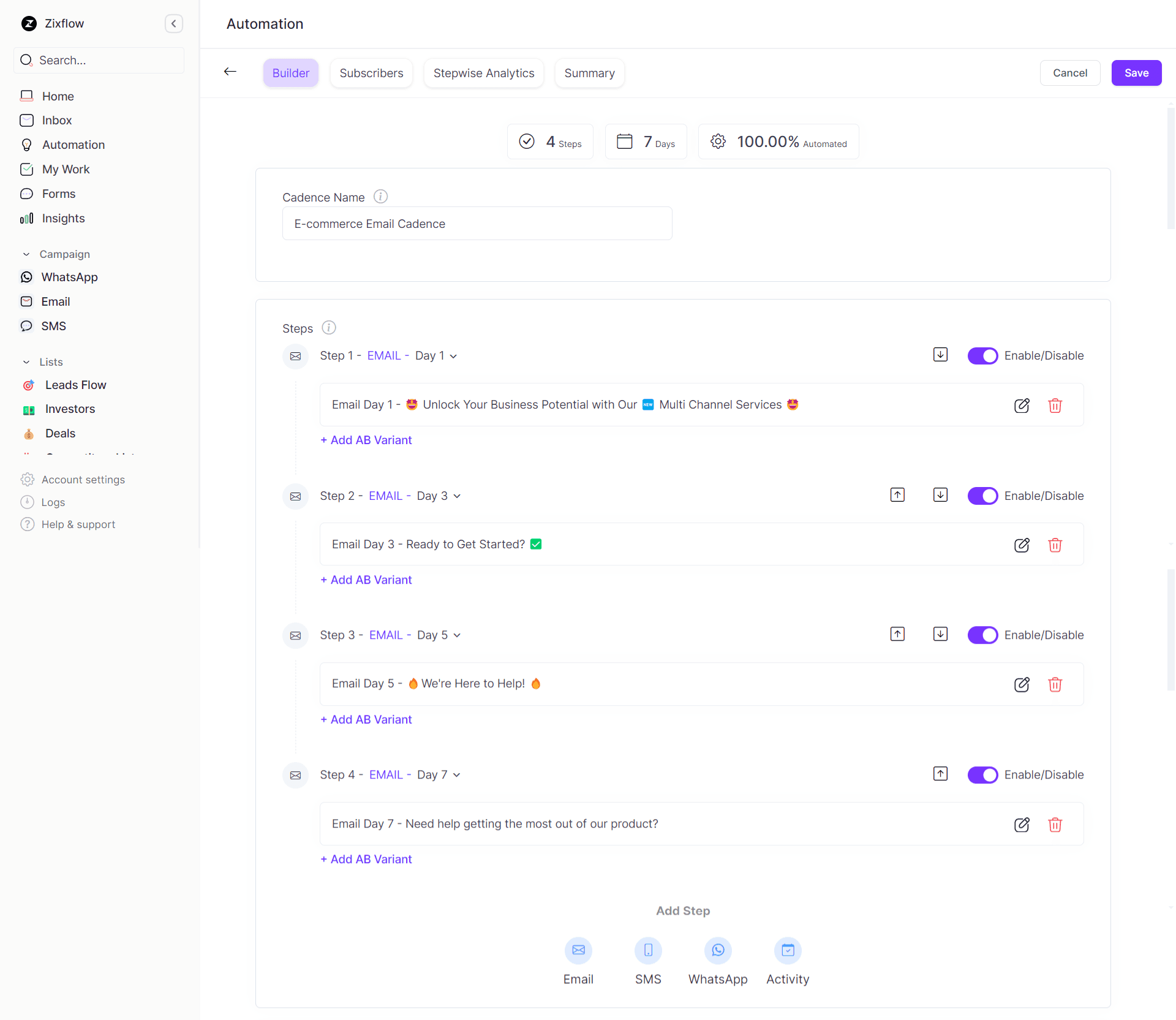
Track the effectiveness of your funnel
The last step in setting up your e-commerce funnel is to monitor its effectiveness and see how efficiently your prospects are moving through it. By tracking its performance, you can find areas of improvement and further streamline them for a shorter customer journey.
The best metric to measure the success of your e-commerce funnel is conversion rate. A high conversion rate signals that you are converting most of your prospects into customers, which in turn, proves that your e-commerce funnel is working.
To measure your conversion rate, use the formula given below:
Conversion Rate = (Total prospects entering the funnel/ Total number of sales) x 100
As a baseline, the average conversion rate for e-commerce is somewhere between 2.5% to 3%. So, if your conversion rate is on the lower end, there is room for improvement.
Build a solid e-commerce marketing funnel to enjoy repeat sales and a loyal customer base
A strong e-commerce marketing funnel ensures you engage your prospects in an effective manner, thus increasing your chances of getting conversions from the get-go. You might get a sale within hours or, in some cases, it might take weeks or even months for prospects to finally come to a decision.
Your aim is to focus on where the prospects are getting stuck and enhance these stages for a smooth customer journey. It is a continuous process to keep improving your e-commerce funnel and drive your conversion rate.
And to make sure you achieve your desired conversion rate, Zixflow is there to help you. With our native sales CRM, you can create segmented lists for various use cases and perform list-wide actions like sending emails or setting up automated workflows for the entire list with a click.
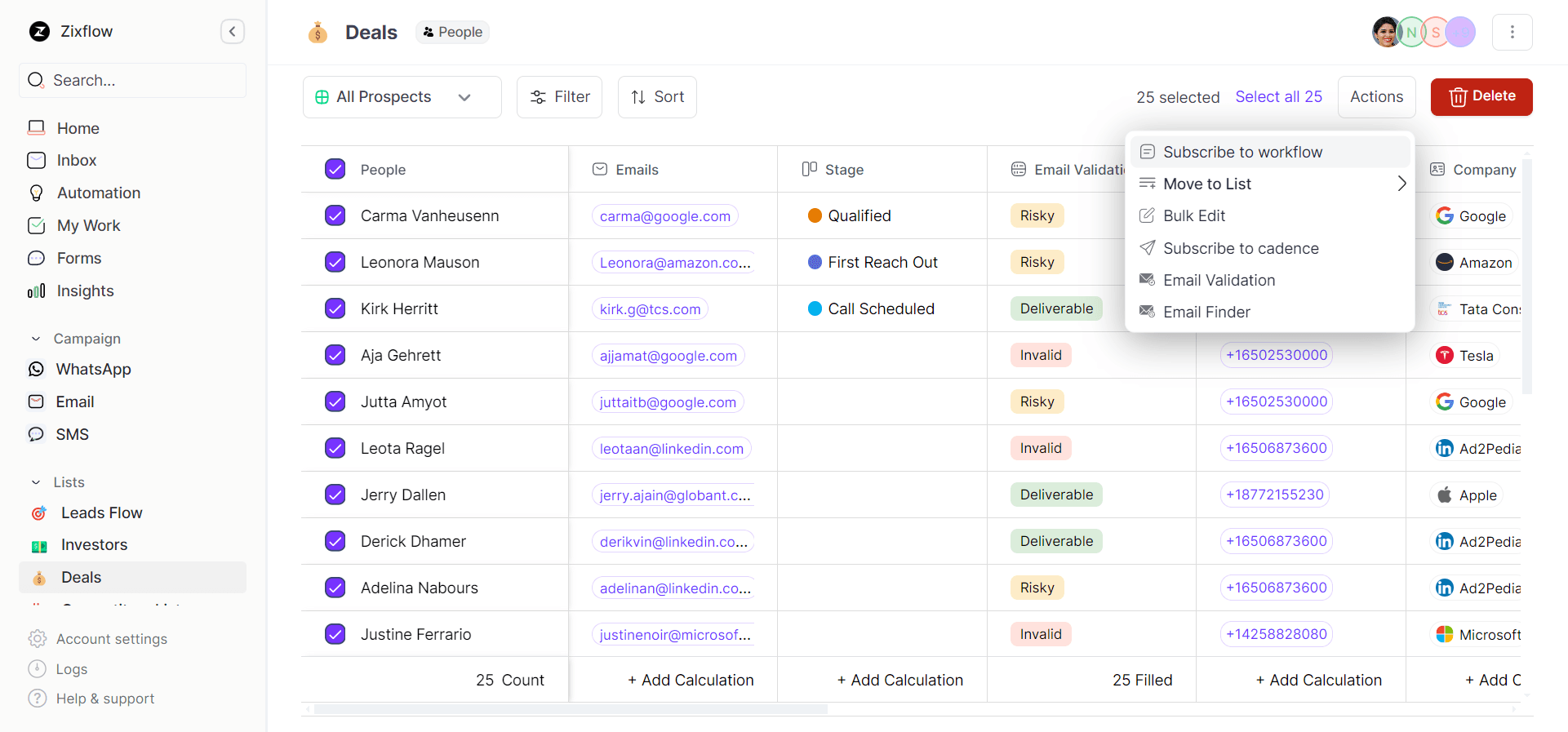
Furthermore, Zixflow lets you connect with your customers across multiple channels including email, SMS, and WhatsApp, enabling you to deliver an all-around engagement across key touchpoints throughout the e-commerce funnel.
The fun part? You can sign up for the platform for free and try out our advanced features with a 7-day trial. So don’t wait. Start boosting your conversion with a state-of-the-art platform built solely to help you grow your e-commerce business.
